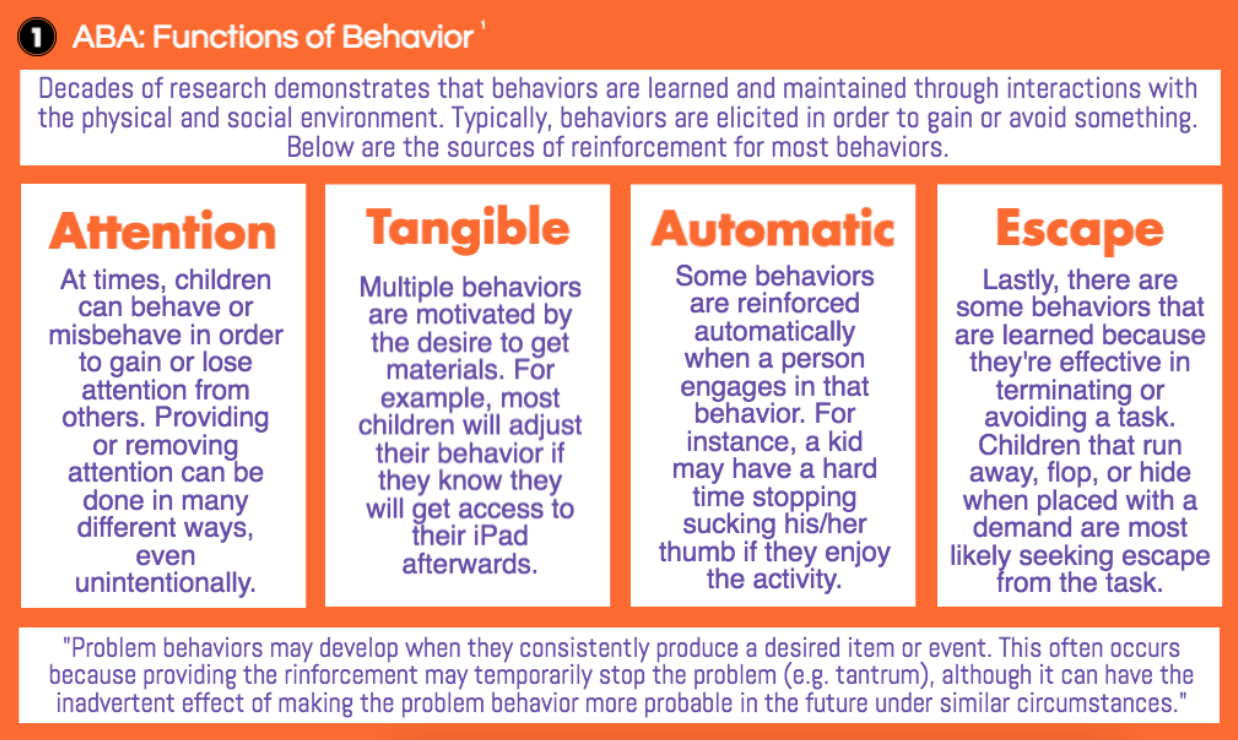First Leap Offers a Free 30 Minute Consultation
Decades of research demonstrates that behaviors are learned and maintained through interactions with the physical and social environment. Typically, behaviors are elicited in order to gain or avoid something. Below are the sources of reinforcement for most behaviors, also known as the functions of behaviors.
Functions of Behavior #1: Attention
At times, children can behave or misbehave in order to gain or lose attention from others. Providing or removing attention can be done in many different ways, even unintentionally.
Functions of Behavior #2: Tangible
Multiple behaviors are motivated by the desire to get materials. For example, most children will adjust their behavior if they know they will get access to their iPad afterwards.
Functions of Behavior #3: Automatic
Some behaviors are reinforced automatically when a person engages in that behavior. For instance, a kid may have a hard time stopping sucking his/her thumb if they enjoy the activity.
Functions of Behavior #4: Escape
Lastly, there are some behaviors that are learned because they’re effective in terminating or avoiding a task. Children that run away, flop, or hide when placed with a demand are most likely seeking escape from the task.
“Problem behaviors may develop when they consistently produce a desired item or event. This often occurs because providing the reinforcement may temporarily stop the problem (e.g. tantrum), although it can have the inadvertent effect of making the problem behavior more probable in the future under similar circumstances.”


